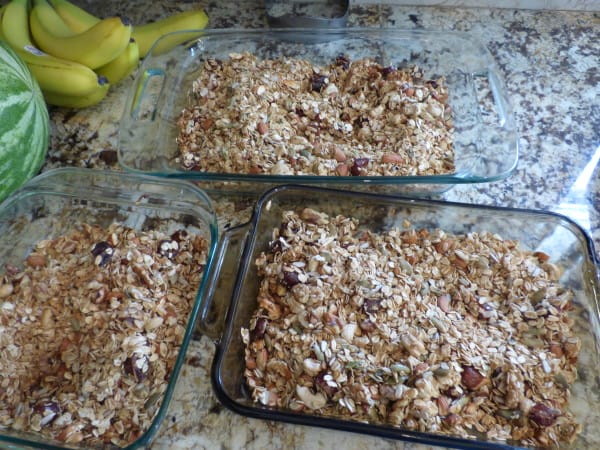Sugar-filled holidays can be tricky for parents, and sometimes, balancing fun with health can feel almost impossible. Should kids be allowed to eat as much candy as they want because it’s a special occasion? Should you set strict limits, swap candy for toys, or skip trick-or-treating entirely?
The truth is there’s no single “right” answer. There are many – and they can all be good!
In this article, you’ll learn how sugar affects children’s bodies, why fiber and protein can make a big difference, and some practical, judgment-free ways to approach high-sugar events like Halloween while keeping both health and real life in mind.
Modern Parenting & The Pressure to “Do It Right”
Modern parenting can feel like one long test, and holidays often magnify that pressure. Every choice feels loaded: what snacks you bring to the class party, what kind of candy you allow, even how much sugar is “too much.” Social media adds to the noise, often showing curated versions of “perfect” parenting – perfectly healthy treats, plastic-free decorations, and screen-free evenings.
But real family life isn’t one-size-fits-all, and doing it right doesn’t mean doing it perfectly.
Maybe your child’s joy comes from running house to house, swapping candy with friends, and sneaking an extra chocolate (or two or three!) before bed. Or maybe your version of Halloween looks quieter, and your family finds joy in having a cozy movie night (yep, with screens!). Both can be beautiful, and both can be “right.”
What matters most is that you make choices intentionally, rooted in love, your child’s unique needs, and your family’s values.
At Dr. Green Mom, we support all parents – those who loosen the reins on holidays and those who hold them tighter. Because good health isn’t built in one night, and neither is balance. Sometimes, saying yes to letting loose is just as nourishing as saying no to sugar.
You might like this article, too: Basics Of An Anti-Inflammatory Lifestyle

The 70/30 Approach
Many parents find comfort in what we call the 70/30 principle – focusing on making intentional, nourishing choices about 70% of the time, and allowing flexibility for the other 30%.
That 30% gives space for birthday cake, Halloween candy, and holiday cocoa – without guilt.
Research continues to show that consistent habits — balanced meals, movement, hydration, and emotional connection — far outweigh occasional indulgences when it comes to long-term health. A child who eats a nutrient-dense diet most days, sleeps well, and plays actively is remarkably resilient to the occasional sugar surge.
So, if you find yourself loosening the reins a little on Halloween night, know that you’re not undoing your hard work- you’re simply teaching your kids about the 70/30 approach and balance!
Did you know I have lots of family-friendly recipes on my website? Find them here!
The Science: What Happens When Kids Eat a Lot of Sugar
When children eat a large amount of sugar, especially on an empty stomach, their blood glucose levels rise rapidly. The pancreas releases insulin to move that glucose into cells for energy, but when the spike is steep, the drop can be just as dramatic.
This “rollercoaster” effect can lead to:
- Irritability and fatigue once blood sugar crashes
- Cravings for more sugar as the body tries to restore equilibrium
- Difficulty focusing or sleeping, especially in sensitive children.
Occasional sugar spikes are not harmful in otherwise healthy kids, but regular, repeated exposure can strain insulin balance and contribute to inflammation over time (1,2,3).
The Power of Fiber and Protein for Balanced Blood Sugar
One of the best ways to reduce the impact of sugar is to buffer it – that’s where fiber and protein come in.
When we eat fiber and protein before sweets, the body absorbs sugar more slowly, which can prevent sharp glucose swings and help maintain balanced energy levels.
In a clinical trial, participants who consumed vegetables before carbohydrates experienced a lower post-meal glucose spike and reduced insulin levels compared to those who ate carbs first (4). Another review found that dietary fiber (found abundantly in veggies) improves glycemic control (5).
These findings translate into a simple tip: don’t send kids out trick-or-treating on an empty stomach.

What to Serve Before Trick-or-Treating
A balanced pre-Halloween dinner can go a long way toward preventing sugar crashes later in the night. Look for meals that include fiber, protein, and healthy fats – the trio that keeps energy stable.
Examples:
- Ground beef tacos with beans, avocado, and cheese
- Roasted chicken, sweet potatoes, and broccoli
- Lentil chili topped with sour cream or cheese
- Salmon with quinoa and roasted vegetables
- Scrambled eggs and whole wheat toast with fruit
- Supporting the Body After Eating Lots of Sugar
Once the fun is over, focus on gentle restoration. There’s no need for guilt (!!), just a few small, supportive habits that help the body rebalance naturally.
What To Do After a Night of Candy and Treats
After your little ones come home from trick-or-treating (or a party, or any other evening where sugar intake might’ve been higher than usual), channel their excitement into movement. A quick game that gets their bodies moving. Think “Simon Says” or a dance party! This works because research shows that even light activity after eating can significantly lower post-meal blood glucose levels (6).
Before turning in for the night:
- Give your kiddo their usual vitamins and herbals, and consider including some extra detox support like Detox Greens™ or Detox Junior™.
- If bellies are feeling overfull, TummEase™ can help soothe occasional discomfort after indulging.
- Brush teeth thoroughly to wash away sticky sugar and protect enamel.
Then, focus on winding down: a warm bath and consistent bedtime routine signals to the body that it’s time to rest and reset.
Tips for the Morning After Lots of Sugar
The morning after a sugar-heavy night, the goal is gentle recovery, not guilt. Avoid framing the conversation around restriction or “making up for” what was eaten. Instead, celebrate the fun, laugh about the night, and then naturally return to your family’s usual nourishing routines.
If your child mentions a belly ache, resist the urge to say “See? I told you so.” Instead, stay curious and connected. You might say, “Yeah, that doesn’t feel good, does it? Sometimes when we eat a lot of sweets, our bodies let us know they’ve had enough. What do you think your body might need today to feel better?” This keeps the focus on self-awareness, not shame, and helps your child begin to trust their body’s signals.
Some gentle ways to support recovery include:
- Hydration: Offer water or a child-friendly herbal tea first thing in the morning.
- Fiber: I like to include chia seeds in my cooking when I want to be sure to get plenty of fiber!
- Cruciferous vegetables: Broccoli, kale, and cauliflower contain compounds that help activate the liver’s natural detox enzymes.
- Movement: Encourage outdoor play, dancing, or light activity to help regulate blood sugar and lymphatic flow.
- Sleep: Stick to normal naps and bedtimes – a consistent sleep routine helps rebalance cortisol and melatonin after an exciting night.
- Herbal Detox Support: Detox Greens™, VaxClear™, and Detox Junior™ are gentle, kid-friendly formulas designed to support the body’s natural detox pathways.
To learn more, read this article: Herbal Detox Support For Kids: When To Use VaxClear®, Detox Junior™ & Metal Mend™
Summary
There’s no single “right” way to handle high-sugar events like Halloween. Your family might go all in, swap candy for toys, limit sweets, or celebrate in an entirely different way, and all these approaches are valid! My tip is to focus on balance: a nourishing meal before sweets, supportive habits afterward, and grace in between. The 70/30 approach reminds us that good health allows for flexibility.
At the end of the day, whatever approach you choose, you’re doing a great job – and your kids are lucky to have a parent who cares enough to ask these questions!
References:
- Ma X, Nan F, Liang H, Shu P, Fan X, Song X, Hou Y, Zhang D. Excessive intake of sugar: An accomplice of inflammation. Front Immunol. 2022 Aug 31;13:988481. doi: 10.3389/fimmu.2022.988481. PMID: 36119103; PMCID: PMC9471313.
- Macdonald IA. A review of recent evidence relating to sugars, insulin resistance and diabetes. Eur J Nutr. 2016 Nov;55(Suppl 2):17-23. doi: 10.1007/s00394-016-1340-8. Epub 2016 Nov 23. PMID: 27882410; PMCID: PMC5174139.
- DiNicolantonio JJ, O’Keefe JH. Added Sugars Drive Insulin Resistance, Hyperinsulinemia, Hypertension, Type 2 Diabetes and Coronary Heart Disease. Mo Med. 2022 Nov-Dec;119(6):519-523. PMID: 36588634; PMCID: PMC9762218.
- Imai S, Fukui M, Kajiyama S. Effect of eating vegetables before carbohydrates on glucose excursions in patients with type 2 diabetes. J Clin Biochem Nutr. 2014 Jan;54(1):7-11. doi: 10.3164/jcbn.13-67. Epub 2013 Dec 27. PMID: 24426184; PMCID: PMC3882489.
- Giuntini EB, Sardá FAH, de Menezes EW. The Effects of Soluble Dietary Fibers on Glycemic Response: An Overview and Futures Perspectives. Foods. 2022 Dec 6;11(23):3934. doi: 10.3390/foods11233934. PMID: 36496742; PMCID: PMC9736284.
- Engeroff T, Groneberg DA, Wilke J. After Dinner Rest a While, After Supper Walk a Mile? A Systematic Review with Meta-analysis on the Acute Postprandial Glycemic Response to Exercise Before and After Meal Ingestion in Healthy Subjects and Patients with Impaired Glucose Tolerance. Sports Med. 2023 Apr;53(4):849-869. doi: 10.1007/s40279-022-01808-7. Epub 2023 Jan 30. PMID: 36715875; PMCID: PMC10036272.


